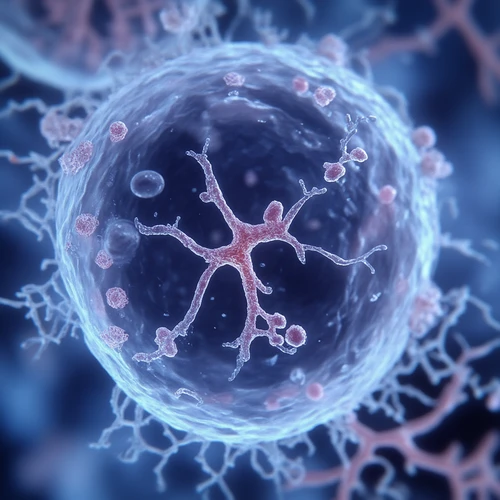Neuroblastoma presents unique challenges in cancer treatment. While some tumors regress on their own, aggressive forms grow rapidly and resist therapy. These aggressive tumors typically have elevated copies of the MYCN oncogene.
A team led by Dr. Jan Dörr and Professor Anton Henssen at the Experimental and Clinical Research Center has uncovered that the location of the MYCN gene impacts neuroblastoma aggression: when found outside chromosomes, cancer cells become dormant and therapy-resistant.
The study, published in Cancer Discovery, introduces a promising treatment strategy targeting these dormant tumor cells, validated through mouse models.
Cancer DiscoveryFirst authors include Dr. Giulia Montuori from Charité's Pediatric Oncology Department and Fengyu Tu from international research teams. Henssen, Werner, and Huang are part of the Cancer Grand Challenges team eDyNAmiC. Dr. Fabian Coscia's Spatial Proteomics group at the Max Delbrück Center also played a vital role.
Neuroblastoma is prevalent in young children, often affecting the sympathetic nervous system cells throughout the body.
"We aimed to understand MYCN's function in cancer cells and its influence on other genes for more effective future treatments," says Dörr. Henssen previously discovered that these oncogenes are frequently found outside chromosomes as small, ring-shaped DNA molecules within tumor cells.
Dörr's team further analyzed the tumor cells, finding that only aggressive cells with many MYCN copies respond to chemotherapy. "Cells with few MYCN copies enter a dormant state but can reawaken, contributing to cancer recurrence," Dörr explains.
"There are drugs targeting senescent, or 'sleeping,' cells," he says. In mouse models, combining chemotherapy with these drugs improved treatment outcomes for neuroblastoma tumors where oncogenes reside outside chromosomes.
(The team plans to search for more compounds selective against dormant tumor cells while sparing healthy ones. "This approach may also apply to other cancers involving genes on extra-chromosomal DNA rings," Henssen notes—including aggressive brain tumors.)


